Buying A Whole Lamb: Is It Worth It?
Important Note: When you buy through our links, we may earn a commission. As an Amazon Associate we earn from qualifying purchases. Content, pricing, offers and availability are subject to change at any time - more info.
For most Americans, the thought of eating lamb is not something they consider regularly. However, lamb is a succulent meal alternative for those who dare to sample beyond beef, chicken, or pork. Available in a range of cuts or as a whole carcass, lamb is convenient for most consumers. But is buying a whole lamb worth it, or is pre-portioned lamb better?
Advertisement
If you have the funds, storage space, or capacity to do so, buying a whole lamb is worth it. Although the initial outlay is a bit more expensive than pre-portioned lamb, the benefits of a whole lamb are that it is cheaper per pound; you have access to all the cuts and can cater to larger groups.
When they are available, purchasing a whole lamb brings about many benefits. But before purchasing one, in which situations would a whole lamb be more beneficial than portions? What are the valuable points and negatives of either? And how does a whole lamb compare to other meats?
Why It’s Worth Buying A Whole Lamb
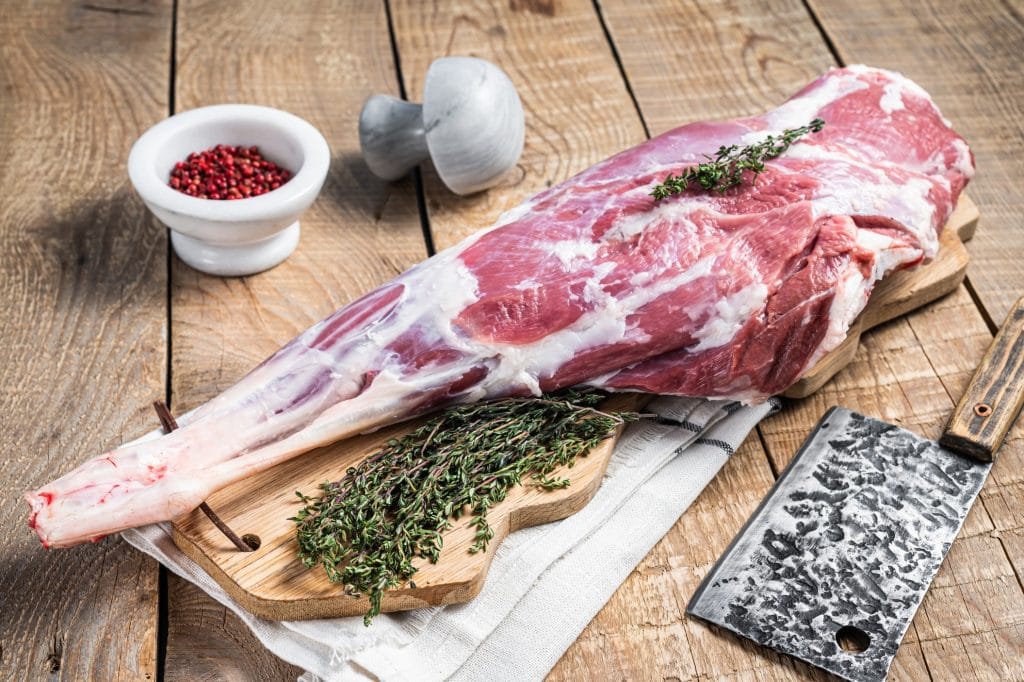
When you have the opportunity to purchase a whole lamb, the space to store it, or the capacity to use it, it makes sense to get one.
Not convinced that a whole lamb is a correct choice for you?
Advertisement
Well, below, we investigate some of the most pertinent reasons for choosing a whole lamb over portioned meat.
Buying A Whole Lamb Is Cheaper
Generally speaking, you save on some costs whenever you purchase items in bulk quantities. This bulk buying goes for meat as well. However, the price per pound of lamb varies, depending on where you purchase it (and if the supplier offers to process the meat as well).
Some places ask $7/pound (including slaughtering fee), while others are up to around $10.90 per pound.
Most lambs are 40 to 50 pounds in weight, but the total range is from 30 pounds (hot-house lambs) to 200 pounds (extra-heavy).
Purchasing a whole lamb from a farmer/butcher is roughly $380 to $450, but some lambs are up to $700 and more depending on the specific breed of lamb and its meat quality.
The level of processing meat undergoes also adds/detracts monetary value. In other words, if a lamb (for example) is portioned, more effort has gone into the meat, which means that the price increases. When you purchase a whole lamb, the degree of processing is lessened, so the “value-added” is less, and therefore the overall price is less.
Advertisement
However, the most significant contributing factor to a whole lamb’s reduced price per pound is related to supply and demand.
Most people want specific meat cuts. So much so that the price of these is inflated. A whole lamb has less “popular” cuts, which reduces its cost per pound.
Since you are purchasing the whole lamb, the cost of the various cuts is “standardized,” so while the overall price is higher (purchasing a whole lamb vs. portions), the price per pound is lessened.
How the lamb is raised also contributes to the cost of the animal. Pasture-raised antibiotic-free animals are generally more expensive, as they are healthier and in greater demand.
Some farmers also sell live animals to process yourself/take to a butcher of your choice. These lambs “on the hoof” cost around $150 to $280.
You Can Buy A Whole Lamb Directly From The Farmer/Butcher
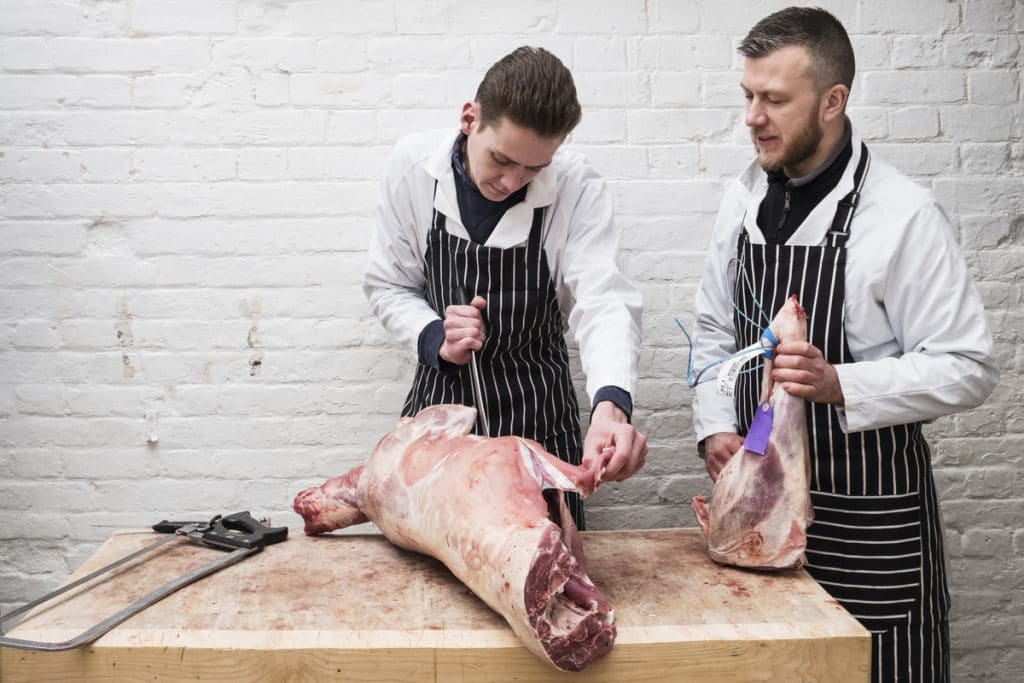
Most of us are trying to make the switch to sustainable lifestyles. For this reason, a lot of emphasis is placed on purchasing locally grown, responsibly farmed, pasture-raised meat.
The benefit of purchasing a whole lamb from a farmer or butcher is that you know where the meat is coming from, and the portions were not made up of various other lambs. This knowledge is beneficial when selecting a lamb raised in a particular way.
Advertisement
When purchasing from chain stores and other larger commercial entities, you can never verify with 100% certainty that the meat you purchase was raised and slaughtered in the best way possible.
Commercial breeders often use antibiotics and other medication on a broad scale, which have a residual presence in the meat even once cooked.
Buying a whole lamb from a farmer means that the farmer gets a better deal, you get good quality meat, you know where it is coming from, and commercial institutions may need to think twice about where they source their meat from as more people switch to locally sourced meat.
More Variety In The Cuts/Parts Of Meat Available
When you purchase a whole carcass, you have access to all of the edible parts (depending on where you buy it from).
What this means is you not only have access to all the delicious “cuts,” but you also have access to the other parts, such as the head, neck, organs, etc. (if you ask the butcher for them).
If you have a knack for butchering or know your meat cuts, you can process the whole lamb yourself. Alternatively, you can send it to a local butcher to cut for you. However, this butchering will inflate the price somewhat and needs to be considered/factored into the process (some places ask $85 per lamb to process).
The hanging weight of a lamb (the weight of the carcass after the unwanted parts like the head, organs, feet, etc., are removed) is roughly 50% of the live weight. Of this carcass weight, a lamb yields roughly 75% meat.
Simply put, a 100-pound live-weight lamb produces a 50-pound carcass. This 50-pound carcass produces roughly 37.5 pounds of meat.
The “lost” weight is bone, sinew, fat, and cartilage.
Advertisement
Situations Where A Whole Lamb Is The Best Option
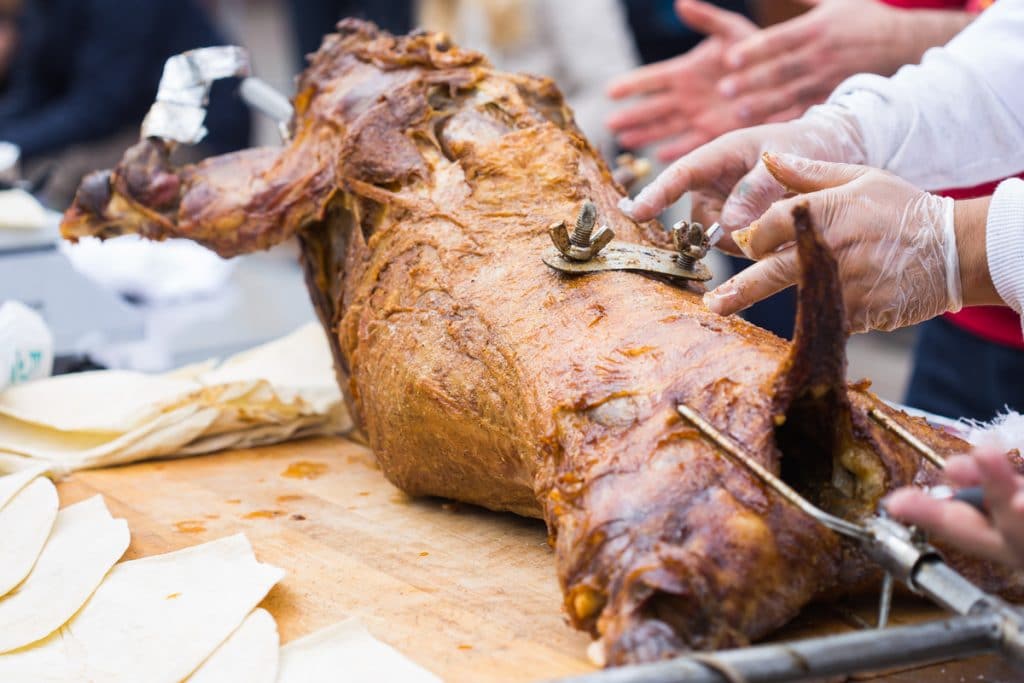
A whole lamb is a perfect choice in almost any situation if you have the storage capacity, desire, time, and creative inclination.
Some specific situations include:
- Parties
- Corporate events
- Weddings
- Graduation
- Any large gatherings where catering is required
- Purchasing a bulk amount of meat to process and use over time
When purchasing a whole lamb, it is essential to know how much freezer space you require and to plan accordingly. A freezer of 12 cubic feet holds approximately 250 pounds of meat.
If the average lamb weighs around 50 pounds, the required freezer space is 2.25 cubic feet.
Situations Where A Whole Lamb Is Not The Best Option
Although a whole lamb works for most situations, there are those times and places where it may not be prudent, economical, or viable to purchase a whole lamb.
- If you don’t have the freezer space or the immediate need, a whole lamb may not be the best option.
- The initial outlay of purchasing a whole lamb is higher than purchasing portions (even if the price per pound is less). If you don’t have the funds, buying a whole lamb is not feasible.
- If you don’t have the capacity (time, energy, desire, or creative orientation) to process and use the whole lamb to its total value, it may not be a good idea to purchase a whole lamb.
- Availability. Sometimes a whole is not an option. Purchasing a whole lamb might not be possible for those who live in the city, and driving to the country where they sell them could prove as cost-inefficient as purchasing portions.
- During a price hike, lamb may not be an affordable option. When the lamb is in short supply, it may become too expensive per pound. This price increase is due to drought, disease, and increased demand during special occasions.
Whole Vs. Portioned Lamb
To better understand whether a whole lamb is worth it or not, we should compare it to the next best thing, lamb portions.
Below we examine some pros and cons of whole and portioned lamb.
Pros Of Whole & Portioned Lamb
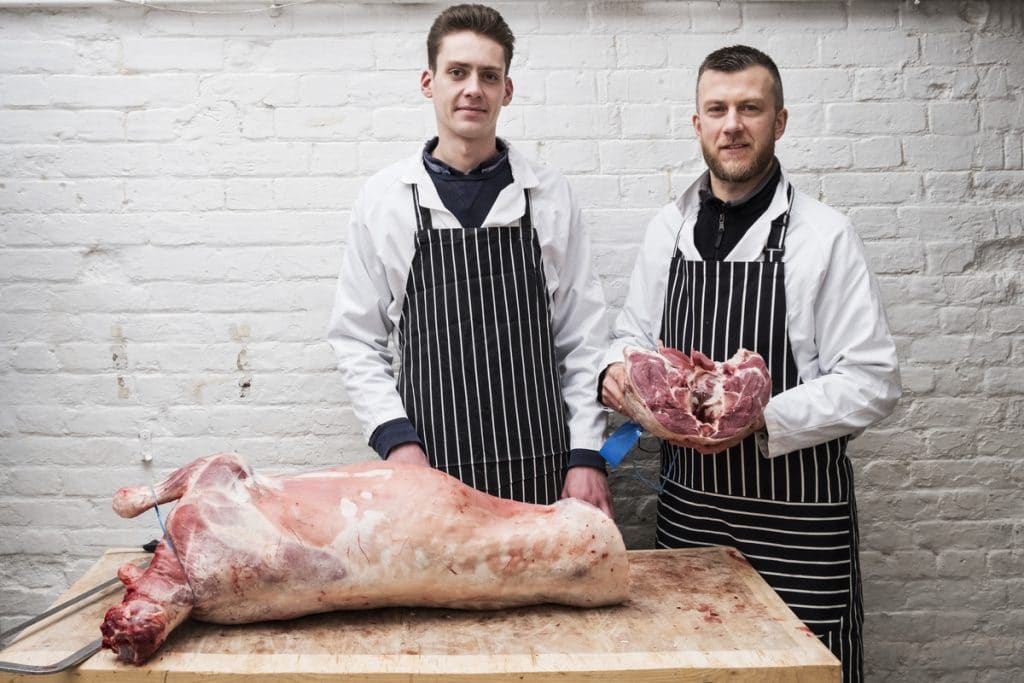
Whole Lamb
- Whole lambs are cheaper per pound than portioned lamb.
- Purchasing a whole lamb means that you have a myriad of dishes if you are creative enough and desire to create different meals with the same type of meat.
- A whole lamb cooked in one sitting produces a great deal of food, feeding a large group of people for “less” effort. Especially in the case of roasting the lamb on a rotisserie, the entire lamb cooks slowly and generally in an automated way to perfection.
- Once purchased, you can decide how you want the lamb cut and portioned up. Either by your efforts or through a butcher’s services. Some of the various processing and portions derived from a whole lamb include:
- Chops
- Leg of lamb (roast)
- Lamb’s shoulder
- Chump
- Breast
- Stew (neck and tail, but other portions as well)
- Mince
- Steaks
Portioned Lamb
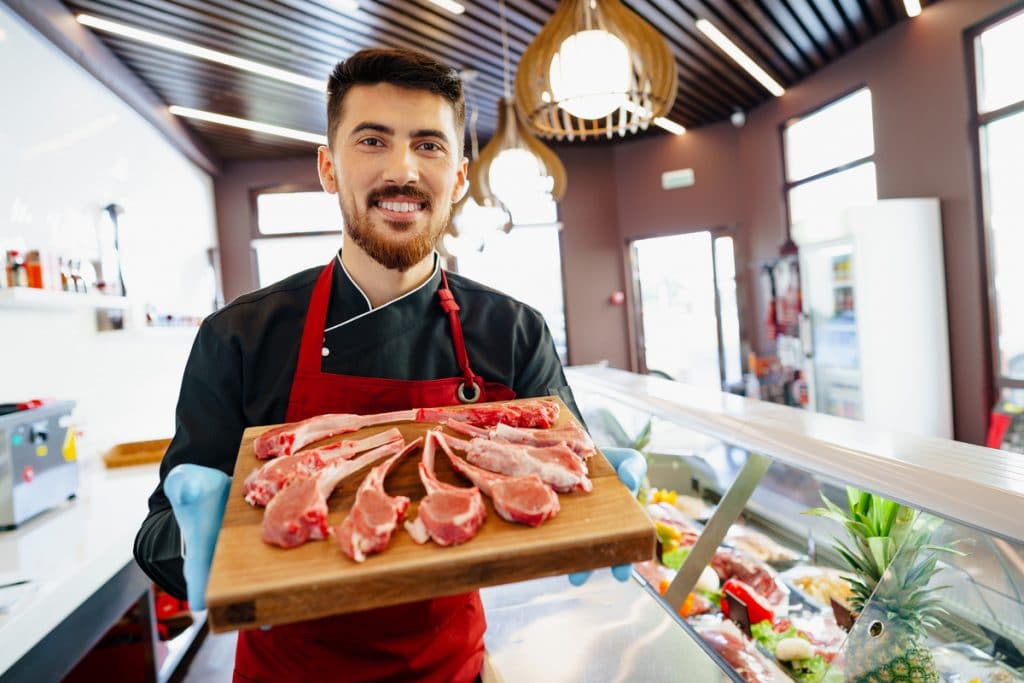
Although you can purchase a whole lamb and portion it yourself, this section deals with a lamb processed by the butchery for a store, and you purchase the finished product/cut.
- For smaller events, or when cooking for yourself, pre-portioned lamb is convenient. You don’t have to portion it before using it.
- If you only want a specific cut of the lamb and have no use for the rest of it, purchasing pre-portioned pieces is beneficial.
- Portioned lamb is easier to marinade and work with, so cooking it requires less elaborate facilities. You can also cook the specific cut to your desired taste without cooking through other layers of meat.
- When you purchase a specific cut of lamb, you pay for exactly what you want/need without paying for the excess.
- Portioned lamb is cheaper than a whole lamb, even if it is more expensive per pound.
Cons Of Whole & Portioned Lamb
Whole Lamb
- You pay for the skeleton, sinew, and other carcass weight. The benefit of a whole lamb is that you get all the meat available on the skeleton. The downside is you get the skeleton as well (in terms of weight). This extra weight increases the price, even though the amount of meat stays the same.
- It is time-consuming and labor-intensive to process a whole lamb if you purchase it for portioning yourself.
- If you plan to cook the entire lamb for one meal, you require the correct facilities (many countries roast the lamb over hot coals/barbeque).
- When cooking a whole lamb in one sitting, you cannot always cook specific parts to the desired degree. I.e., When a lamb is on a rotisserie, it cooks as a unit; therefore, the outside may cook quicker than the inside, potentially drying it out.
Portioned Lamb
- Portioned lamb is more expensive per pound than a whole lamb.
- When you purchase portioned lamb, you do not have access to all the various parts and cuts, you pay for a specific part, and that’s all you get.
- Preparing portioned lamb for a large group of people is often time-consuming (especially for larger groups during a barbeque).
Whole Lamb Vs. Other Meat
This debate does not end at whole or portioned lamb. When choosing to purchase a whole lamb, we also need to briefly compare it to other types of meats available on the market.
Pros Of Whole Lamb Vs. Other Meat
- A whole lamb supplies more meat than smaller animals like turkey or chicken. On average most lambs are 40 to 50 pounds, while chickens are between 5 and 10 pounds, and turkey is roughly 30 pounds.
- Lambs are raised quicker to slaughter age than cattle.
- Lamb and pork have similar nutritional values (the same calories, potassium, protein, and saturated fats), but lamb has higher folate and vitamin B12.
- Because a whole lamb is not eaten as often as some other types of meat, it is a delicacy for special occasions. Lamb’s popularity in the US is relatively low, at an estimated half-a-pound, per person, per year.
Cons Of Whole Lamb Vs. Other Meat
- Lamb is more expensive than chicken, turkey, and pork per pound.
- Lamb is a very fatty type of meat, and a whole lamb comes with a lot more fat than specific portions.
- Lamb is often more difficult to come by, mainly a whole lamb, than beef, chicken, and pork.
- Lamb is smaller than beef (generally) and produces less meat per animal.
- Lambs also take longer to raise than chickens or pigs due to their being raised on pasture.
- Furthermore, lambs require more space to raise (on pasture) than those animals raised in feeding lots.
Is Buying A Whole Lamb Worth It?
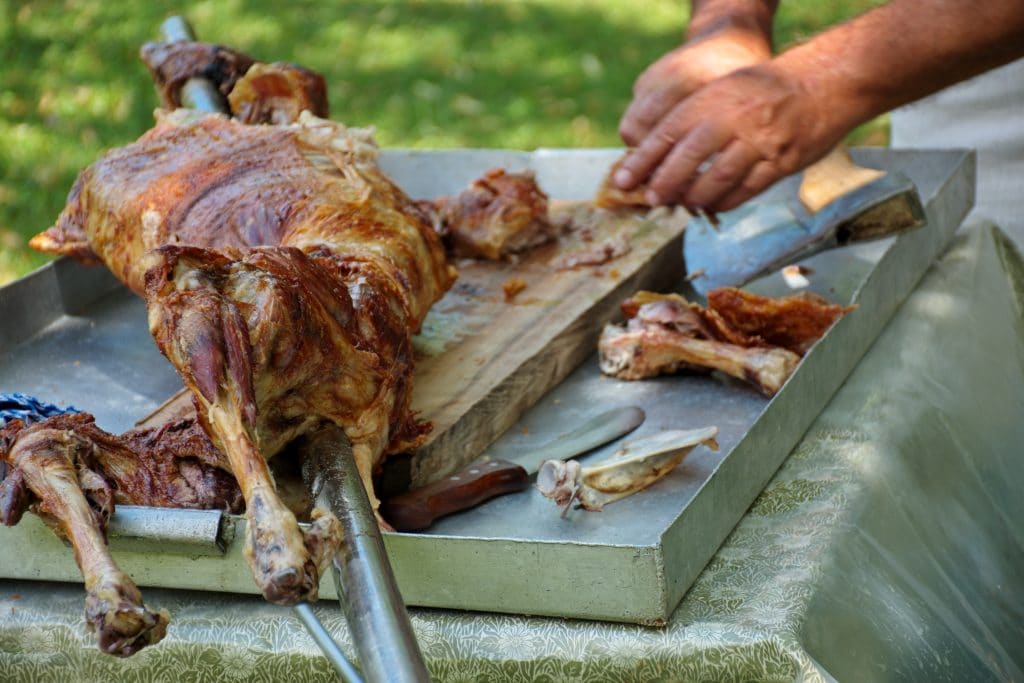
Although lamb lacks popularity compared to pork, beef, and chicken, it is still popular meat among niche groups in the US. When purchasing lamb meat, opting for a whole lamb is a far better choice than pre-portioned lamb, especially if you need to cater to large groups of people or have the storage space to keep the meat in. Buying a whole lamb is cheaper, you can support local farmers, and you have access to all of the available meat on the carcass.

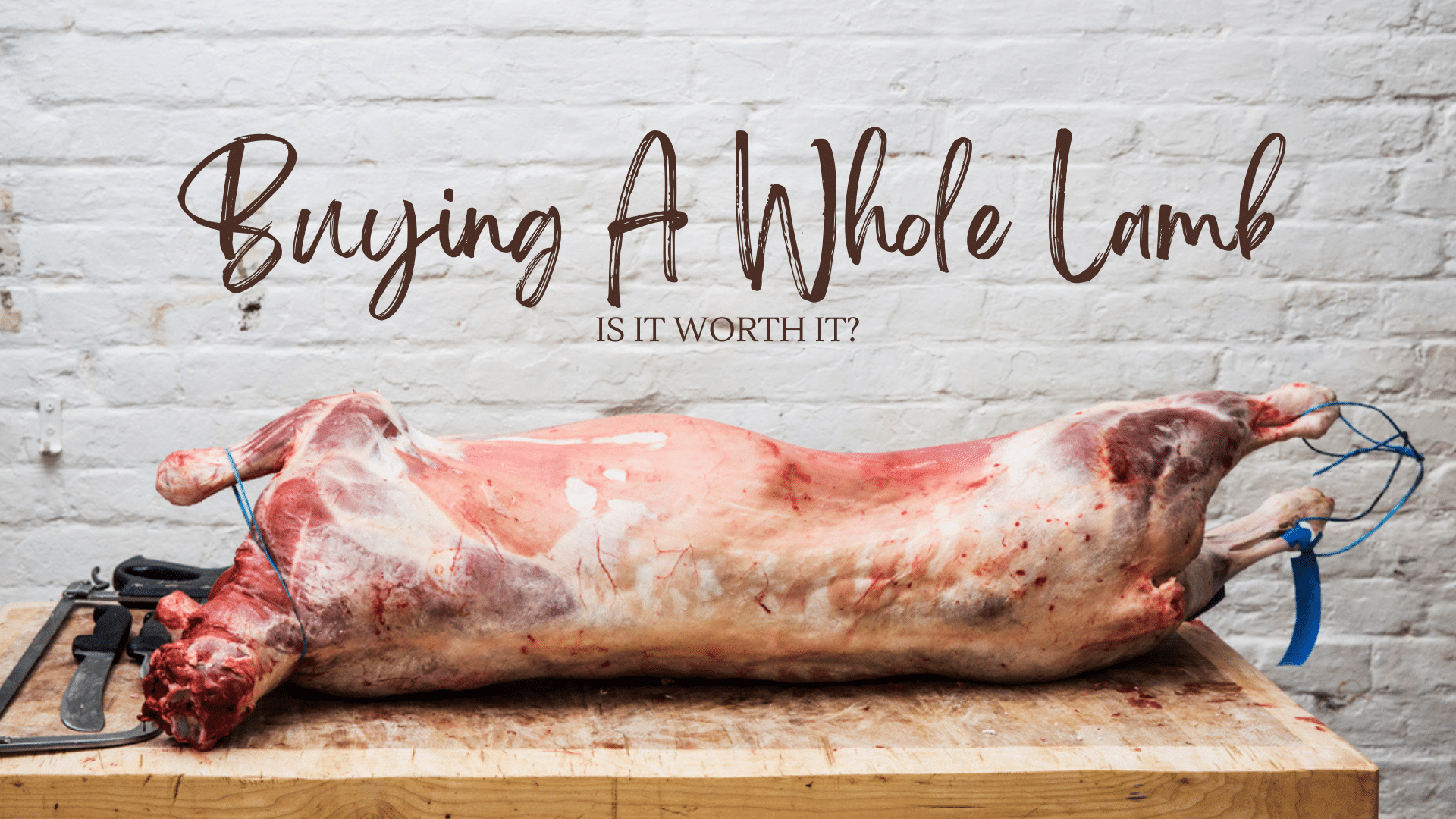
 Please Support Me on Ko-fi
Please Support Me on Ko-fi